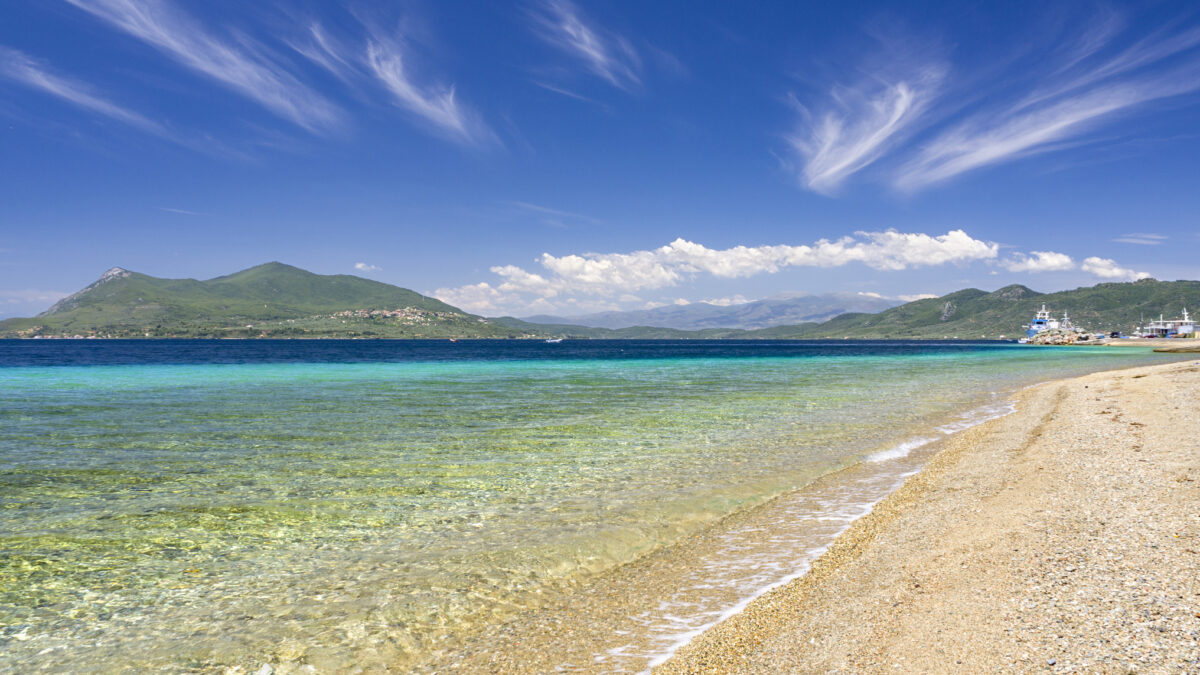Greece’s second largest island, after Crete, and the sixth largest in the Mediterranean, Evia is a stunning and easily accessible mix of mountain ranges and crystal-clear waters. Along with Lefkada, it’s one of only two islands in Greece that can be accessed by road.
The travel information on Evia could fill volumes, due to the island’s size and the landmarks worth visiting, not to mention its rich history. In this article we will provide a general overview of the island, which remains a somewhat unexplored aspect of Greece’s character.
As the myth has it, Herakles frequently visited Evia, where he may even have lived, while its capital, Chalkida, and the city of Eretria were prominent city-states. The island has an elongated shape, widening at its centre. It lies parallel to the northeastern coast of Central Greece and is washed by the Aegean Sea on its exposed side. The beaches of Evia exhibit tremendous variety, with exotic sandy beaches – both organised and otherwise – with azure, pool-like waters found side by side with deep, rocky inlets buffeted by tall waves. Beaches like Chiliadou and Agia Anna in the island’s northern and northeastern reaches, where it falls into the Aegean, exhibit a pristine, rugged beauty. Megali Ammos beach in the south of the island is unique in that, due to the strong prevailing winds, its size and shape are variable. Also worth mentioning is the renowned Aidipsos beach with its medicinal waters, a destination that attracts visitors interested in combining leisure with the beneficial attributes of the local water.
Visitors to Evia will encounter picturesque villages and small cities such as Marmari and Karystos in the south, not to mention locales such as the Drakospita, the gorge at Dirfi – the island’s highest mountain – and the waterfalls at Platanistos.
The Petalioi islets off Evia’s southwestern shore, also known as “Greece’s Maldives,” are accessible by boat and are sure to enchant anyone who takes the opportunity to swim in their crystal-clear blue waters.
Gastronomy
Evia draws its name from Homer, a reference to the island’s fertile farmlands and large cattle herds (from εὖ ‘good’, and βοῦς ‘ox’, meaning ‘the land of the well-fed oxen’). It should thus come as no surprise that the island boasts ample excellent local products.
Kymi figs are considered the best in the world, Evia’s olive trees produce some of Greece’s finest olive oil, the local honey is hidden culinary gem just waiting to be discovered, and the island’s own touloumotyri cheese is sure to satisfy even the most demanding of palates. The local cuisine is simple and frugal, making good use of high-quality ingredients. In this vein, visitors to the island can sample excellent meats, such as lamb and goat, game meats, veal etc. at the local taverns and restaurants. The meats served at Dirfi, the rabbit stew wherever it’s served, and the grilled meats are sure to please. And those with a more adventurous palate should not miss the opportunity to try paspalas, a delicacy made locally of smoked pork that’s often served as an ingredient in omelettes. Another traditional local dish is kourkoubines – otherwise known as goglizes – a variety of pasta exclusive to Evia, served with shredded cheese or sauce topped with cheese. It’s often served as a side dish for other traditional recipes, such as meats in red sauce or in lemon sauce. As for local pies, cheese pie rolls (Tyropitari) with touloumotyri filling or seasonal greens and touloumotyri are never absent from meals on the island. Among the island’s most prominent sweets are galaktoboureko from Chalkida and spoon sweets, especially of the citrus fruit variety.
How to get there
Evia is connected with mainland Greece via the bridge at Chalkida, an hour’s drive from Athens. In addition, numerous ferry connections from ports such as Rafina and Arkitsa have routes connecting to the adjacent ports on the island.










